
Hamburger Bahnhof - Museum für Gegenwart Kunst, Berlin
September 20 2014 – March 1 2015
Curated by Melanie Roumiguiere
Parergon departs from a train station in the XIX century, which later became a Museum of Trains and Transport and is now a contemporary art museum, to create a type of opera, in which a repertoire of objects, buildings and architectural reconstructions appear as the main characters, presenting the complex life of Museums, its hidden politics and display mechanisms. The title Parergon comes from the Greek word referring to that which surrounds – but isn’t – the work: the edges, borders, frames. I was invited to do an exhibition in a state museum that’s itself part of a omplex of museums, each holding various objects of different styles and eras.
Parergon consisted in finding works relating to three main questions. First, the relationship of Germany with historical processes. This history was also the history of technology and, often, trains – the Hamburger Bahnhof used to be a train station. Historically, Germany has this idea or phantasy of engineering that if you do everything right, then everything should go right: if the machine runs efficiently, and if the society is well structured, then nothing can go wrong. And this was completely separated from the moral structure of society.
Second, I was interested in the relationship between Germany and archaeology, which once again took me to trains. Many of the archaeological explorations in the 19th and 18th century were done in conjunction with the building of railroads. Using the construction of train lines as an opportunity to dig. This was the same era that, for instance, the Pergamon museum was built. They didn't simply bring objects, but rather entire sites to the museums. Museums came not only to display objects, but also entire architectures that came from elsewhere. The objects in the exhibition bear a certain relationship to war – showing how a series of art works survived or didn’t survive moments of violence. Each of the objects, in a way, is an object didn't fulfill its destiny, instead taking a different direction. Something happened. Some of these stories are funny, others are tragic. But none of these objects ended up where they were supposed to be.
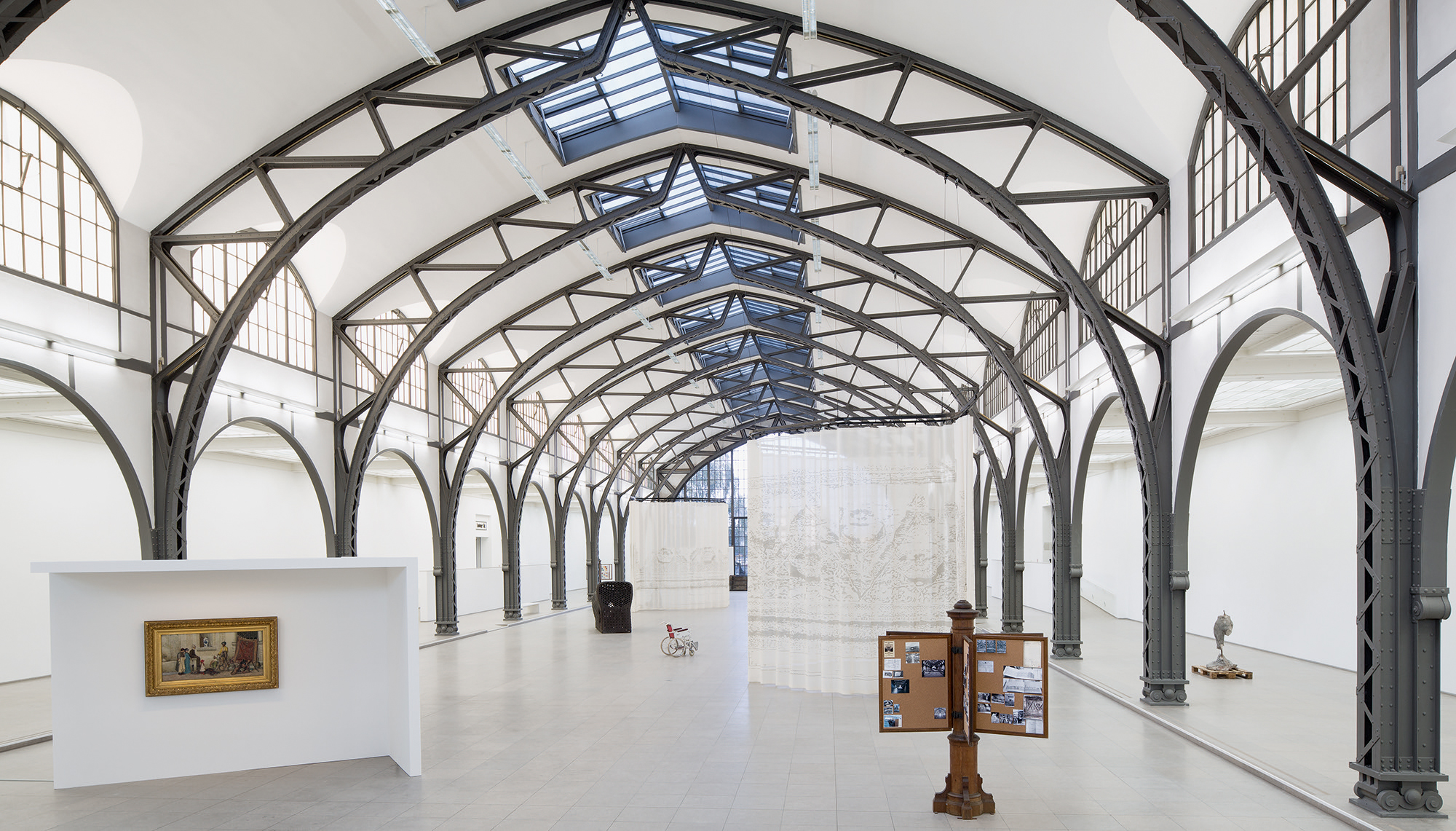
Installation view Parergon, Hamburger Bahnhof – Museum für Gegenwart, Berlin, Germany 2014. photo: Thomas Bruns
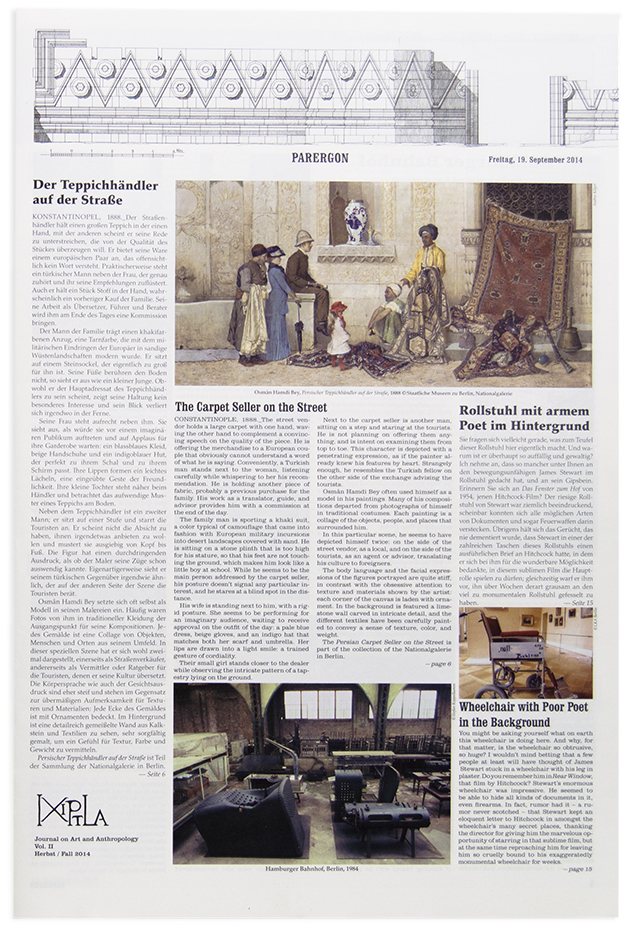
Cover: IXIPTLA VOLII
Magazine published on the occasion of the exhibition Parergon, Hamburger Bahnhof, 2014
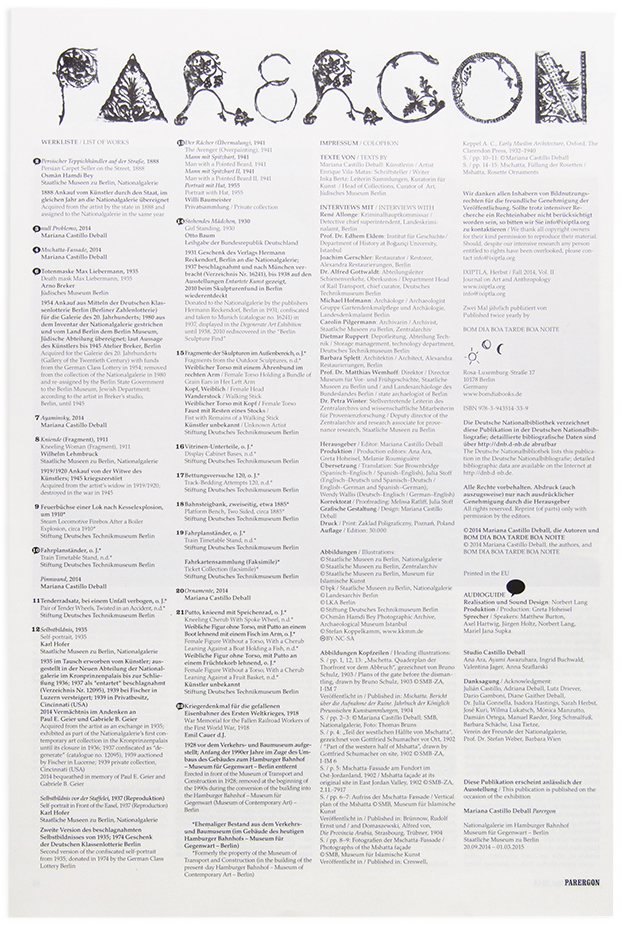
Backcover: IXIPTLA VOLII
Magazine published on the occasion of the exhibition Parergon, Hamburger Bahnhof, 2014
Ixiptla II
Ixiptla Volume II is a newspaper publication handed for free as part of the exhibition including the voices of buildings, objects, specialists, contemporary witnesses and fictitious characters. Expressing individual points of view and experiences, these voices are connected to the complex history of the objects shown in the exhibition.

Spread: IXIPTLA VOLII
Magazine published on the occasion of the exhibition Parergon, Hamburger Bahnhof, 2014

Spread: IXIPTLA VOLII
Magazine published on the occasion of the exhibition Parergon, Hamburger Bahnhof, 2014

Spread: IXIPTLA VOLII
Magazine published on the occasion of the exhibition Parergon, Hamburger Bahnhof, 2014
PARERGON AUDIOGUIDE
A type of opera, in which a repertoire made up of objects, buildings and architectural reconstructions appear as the main characters. These diverse characters enact a “stage play” at the museum, in which their old, familiar ways used in the past and their previous adventures determine the dramaturgy of the exhibition. Objects and works of art from various Berlin museums at different points in time.
New narrations and interconnections that arise between the various objects, historical breaks and chance occurrences.
Realisation und Sound Design: Norbert Lang
Produktion / Production: Greta Hoheisel
Sprecher / Speakers: Matthew Burton, Axel Hartwig, Jürgen Holtz, Norbert Lang, Mariel Jana Supka
TEXTE VON / TEXTS BY
Mariana Castillo Deball, Enrique Vila-Matas, Inka Bertz
INTERVIEWS MIT / INTERVIEWS WITH
René Allonge: Kriminalhauptkommissar Landeskriminalamt, Berlin
Prof. Dr. Edhem Eldem: Institut für Geschichte Boğaziçi University, Istanbul
Joachim Gerschler: Restaurator Alexandra Restaurierungen, Berlin
Dr. Alfred Gottwaldt: Abteilungsleiter Deutsches Technikmuseum Berlin
Michael Hofmann: Archäologe Gruppe Gartendenkmalpflege und Archäologie, Landesdenkmalamt Berlin
Carolin Pilgermann: Archivarin Staatliche Museen zu Berlin, Zentralarchiv
Dietmar Ruppert: Depotleitung, Abteilung Technik, Deutsches Technikmuseum Berlin
Barbara Splett: Architektin, Alexandra Restaurierungen, Berlin
Prof. Dr. Matthias Wemhoff: Direktor Museum für Vor- und Frühgeschichte, Staatliche Museen zu Berlin
Dr. Petra Winter: Stellvertretende Leiterin des Zentralarchivs und wissenschaftliche Mitarbeiterin für Provenienzforschung, Staatliche Museen zu Berlin
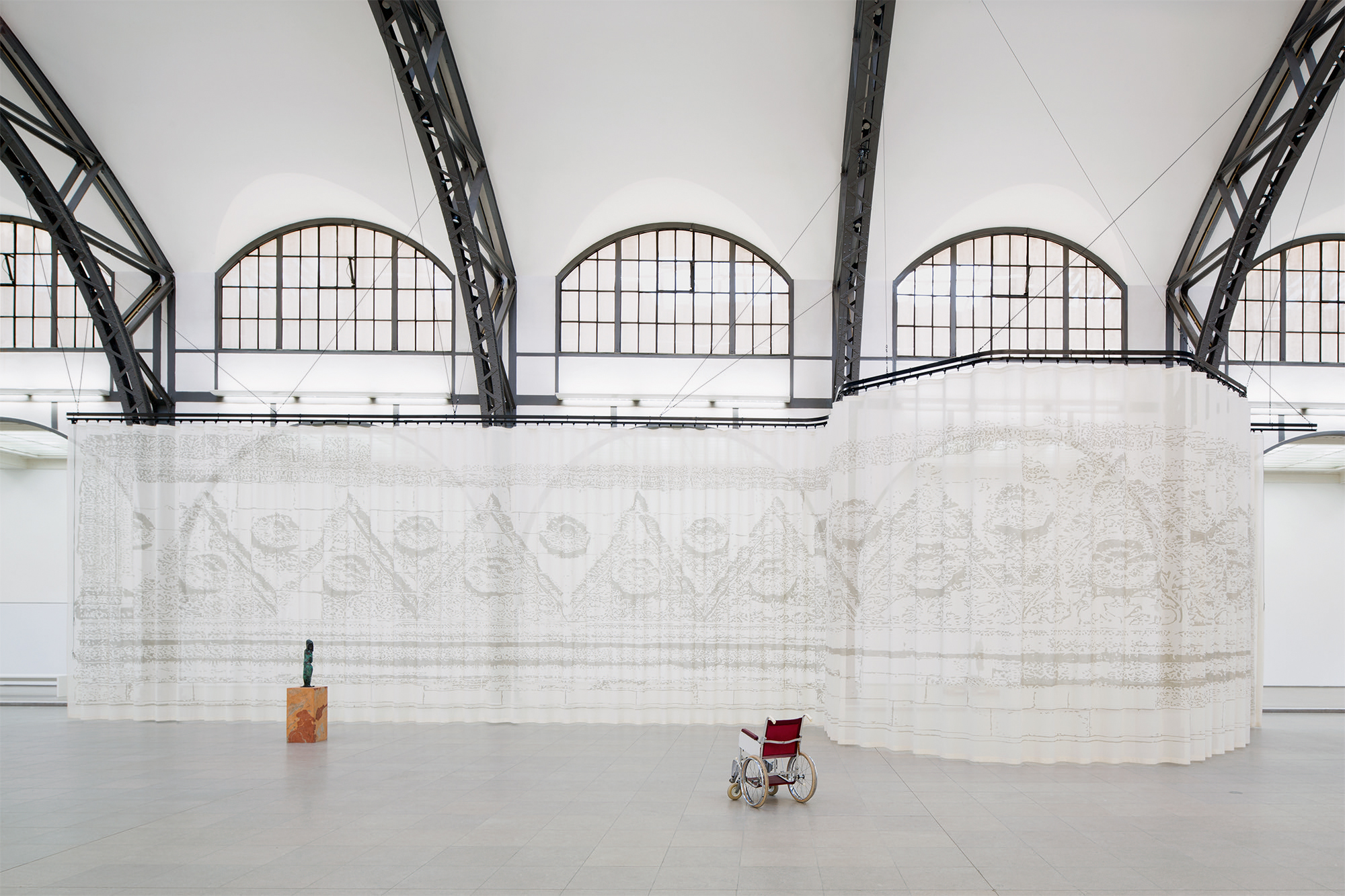
Installation view Parergon, Hamburger Bahnhof – Museum für Gegenwart, Berlin, Germany 2014. photo: Thomas Bruns

Null Problemo, 2013
Reproduction of a wheelchair with inscription. photo: Thomas Bruns
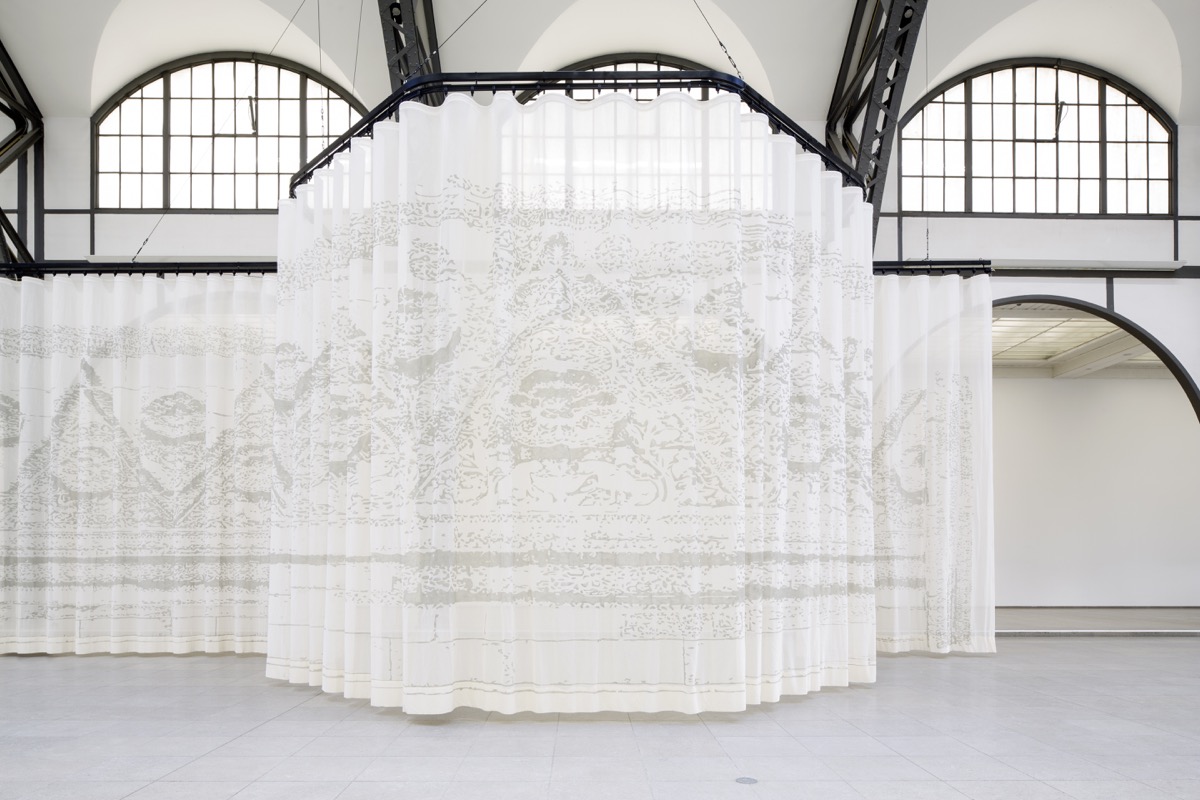
Mschatta Fassade, 2014
Textile paint on cotton fabric, metal track. photo: Thomas Bruns

Detail: Mschatta Fassade, 2014
Textile paint on cotton fabric, metal track. photo: Thomas Bruns
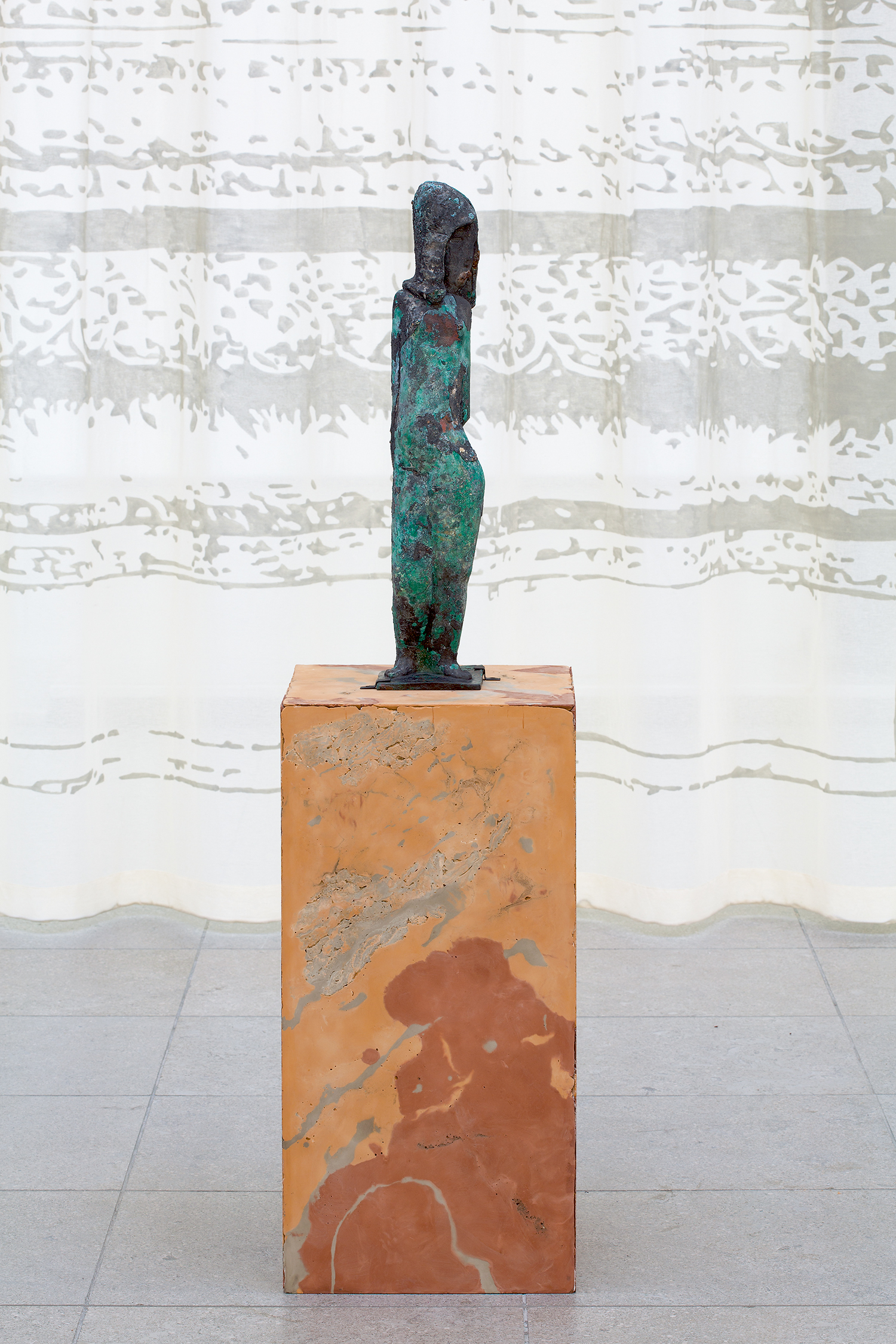
Otto Baum
Stehendes Mädchen, 1930. photo: Thomas Bruns

Installation view Parergon, Hamburger Bahnhof – Museum für Gegenwart, Berlin, Germany 2014. photo: Thomas Bruns

Ayaminsky
Parergon, Hamburger Bahnhof, 2014, Berlin. photo: Thomas Bruns
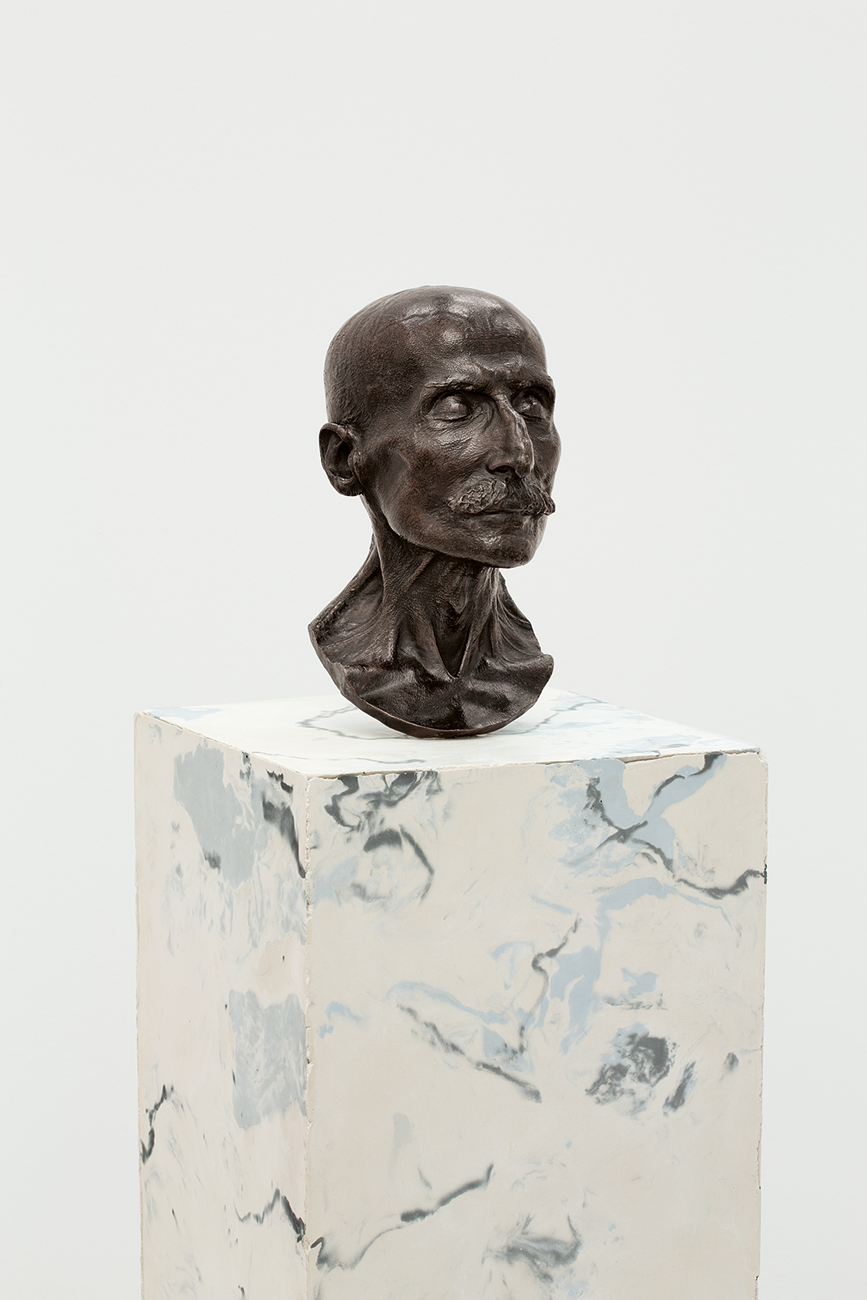
Arno Breker
Death mask of Max Lieberman, 1935
Bronze, 34 x 16 x 12 cm. photo: Thomas Bruns
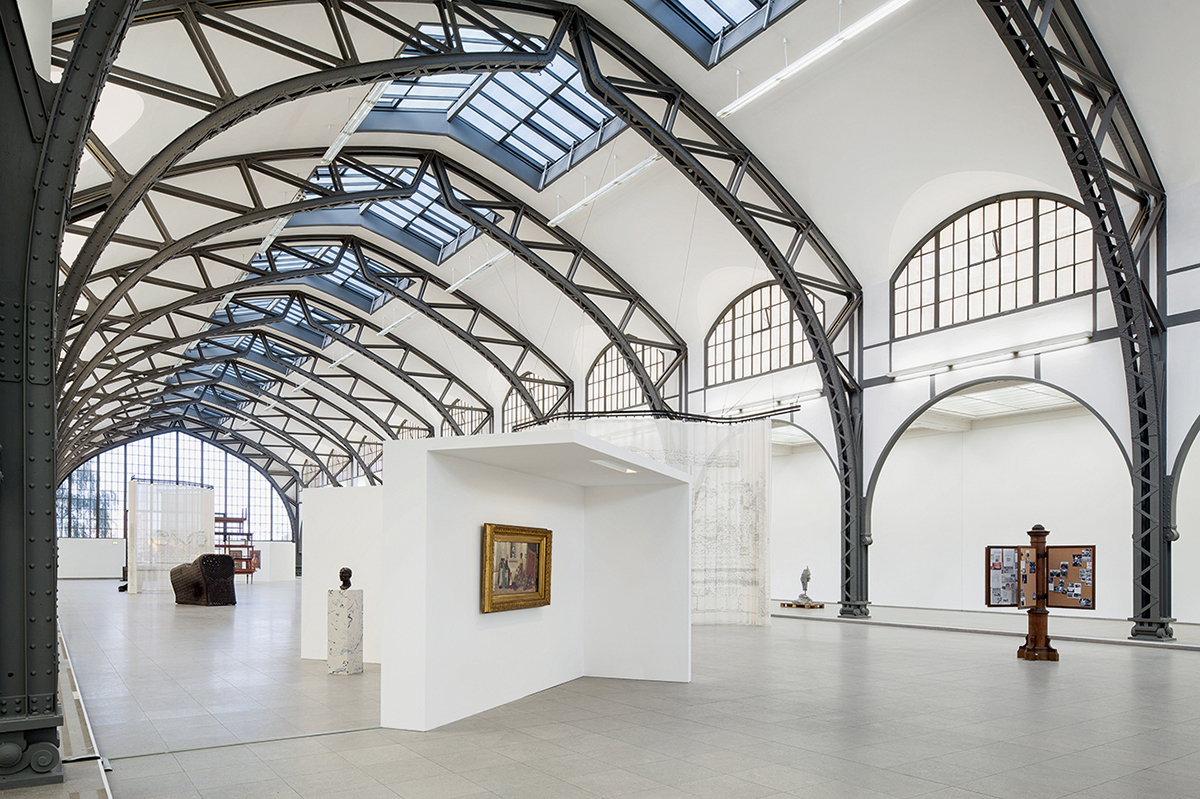
Installation view Parergon, Hamburger Bahnhof – Museum für Gegenwart, Berlin, Germany 2014. photo: Thomas Bruns

Ornamente, 2013
Pigment, gouache on wall. photo: Thomas Bruns
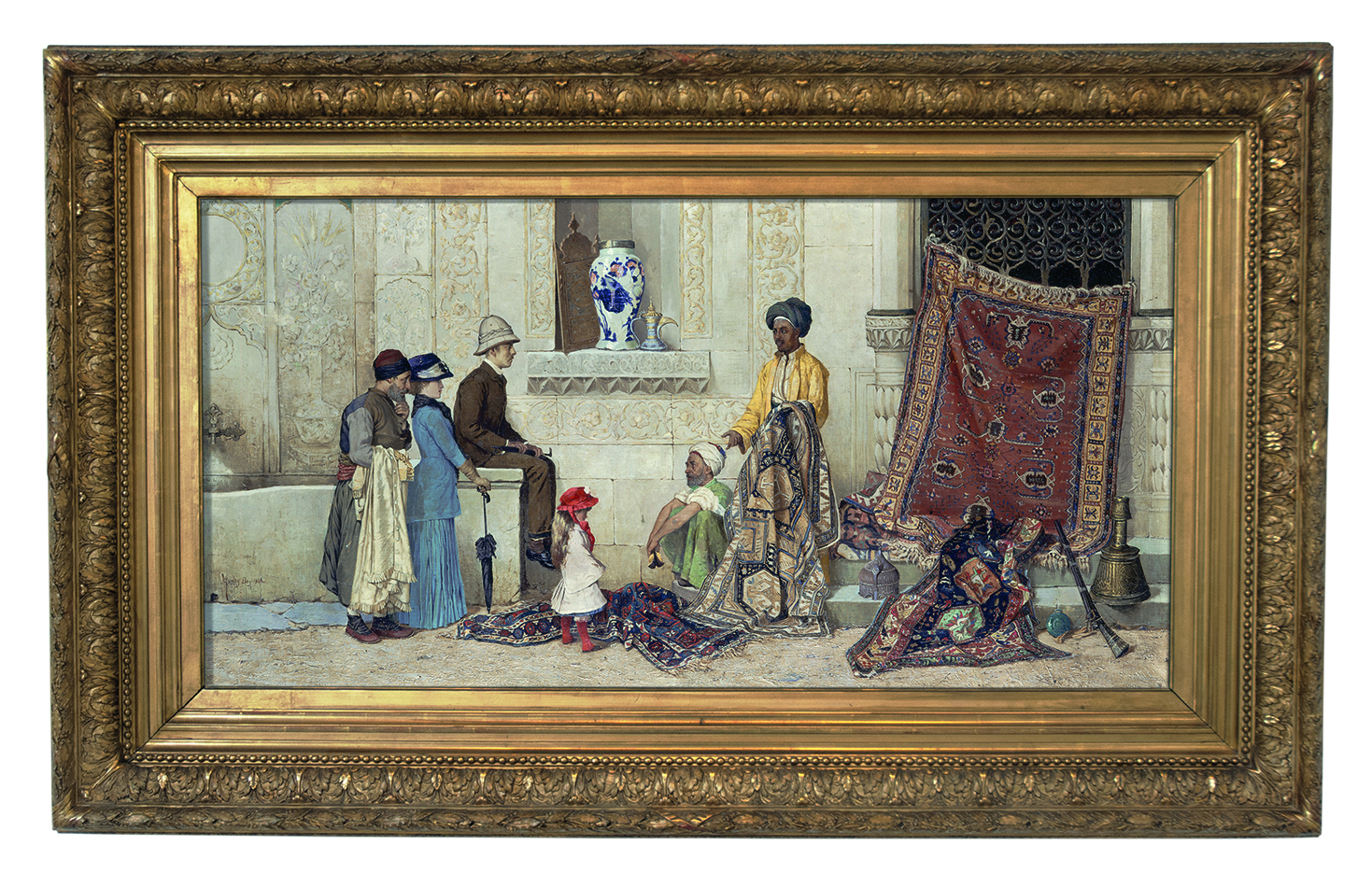
Osmân Hamdi Bey
Persischer Teppichändler auf der Strasse, 1888
Oil on canvas

Installation view Parergon, Hamburger Bahnhof – Museum für Gegenwart, Berlin, Germany 2014. photo: Thomas Bruns
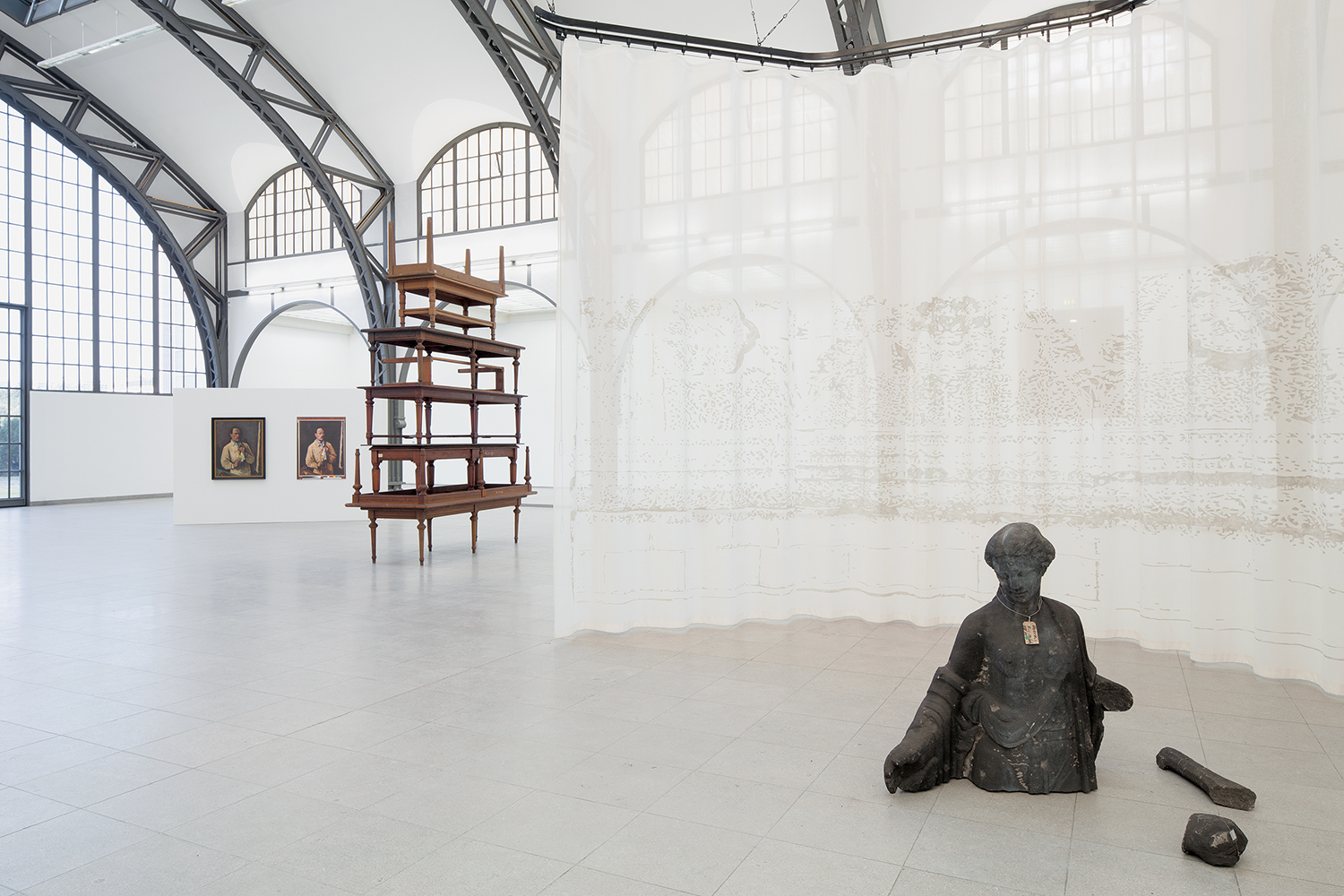
Installation view Parergon, Hamburger Bahnhof – Museum für Gegenwart, Berlin, Germany 2014. photo: Thomas Bruns
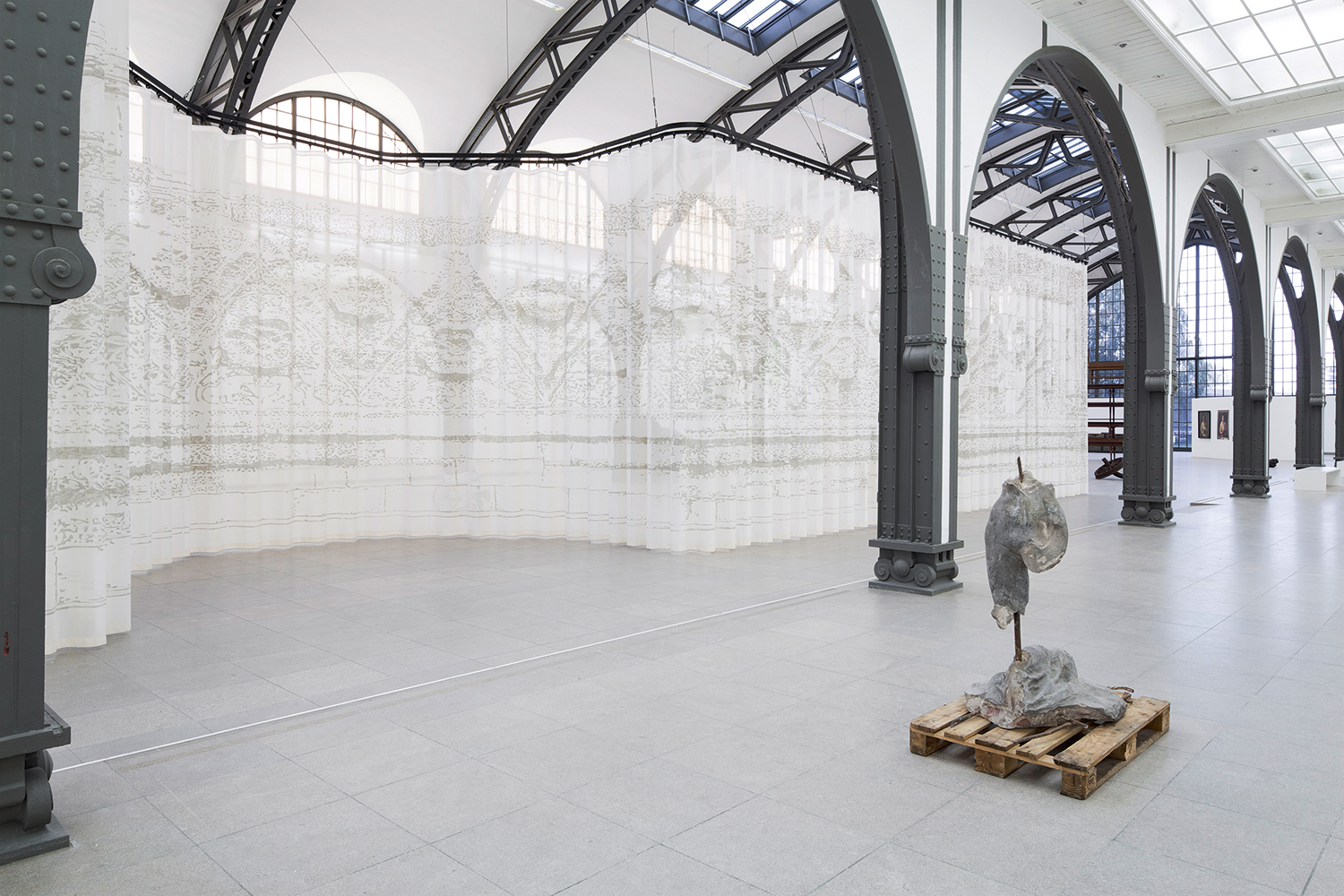
Installation view Parergon, Hamburger Bahnhof – Museum für Gegenwart, Berlin, Germany 2014. photo: Thomas Bruns

Installation view Parergon, Hamburger Bahnhof – Museum für Gegenwart, Berlin, Germany 2014. photo: Thomas Bruns

Installation view Parergon, Hamburger Bahnhof – Museum für Gegenwart, Berlin, Germany 2014. photo: Thomas Bruns

Fahrkartensammlung (Facsimiles), 2014. photo: Thomas Bruns
Ticket Collection (facsimiles)

Installation view Parergon, Hamburger Bahnhof – Museum für Gegenwart, Berlin, Germany 2014. photo: Thomas Bruns
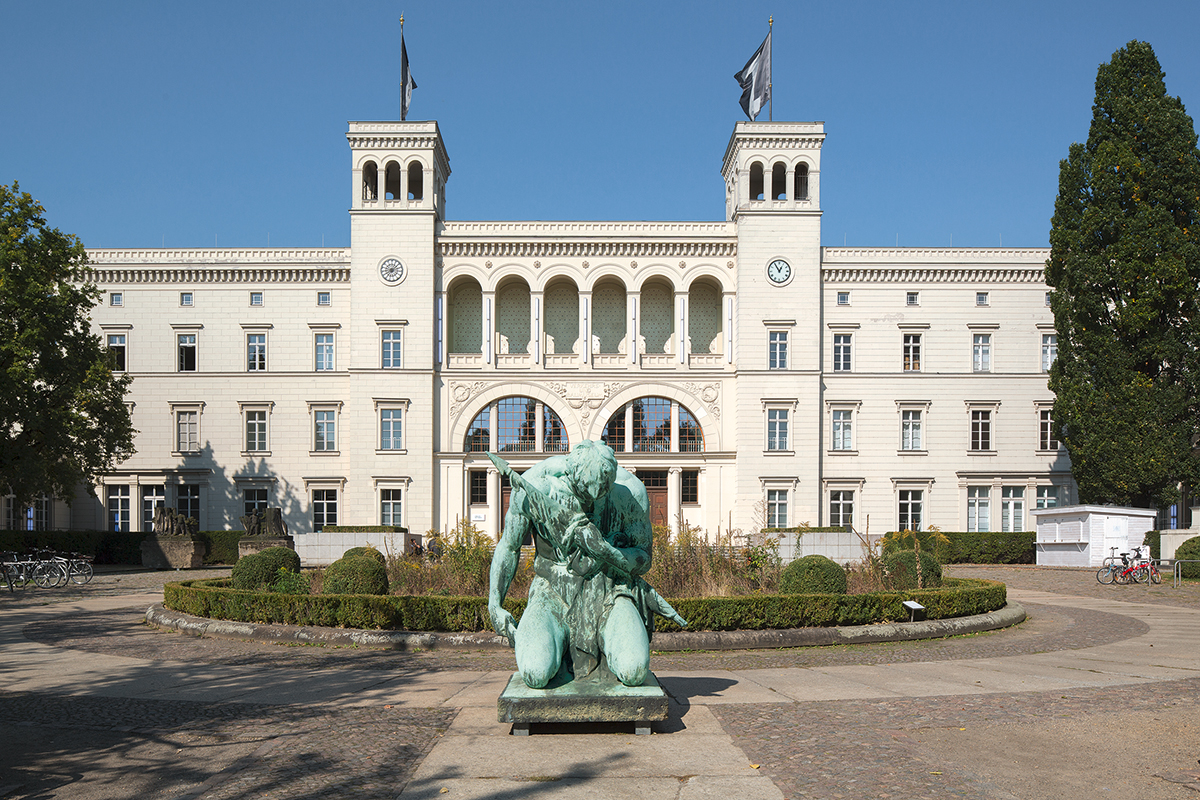
Otto Baum
Stehendes Mädchen, 1930. photo: Thomas Bruns

Hamburger Bahnhof - Museum für Gegenwart Kunst, Berlin
September 20 2014 – March 1 2015
Curated by Melanie Roumiguiere
Parergon departs from a train station in the XIX century, which later became a Museum of Trains and Transport and is now a contemporary art museum, to create a type of opera, in which a repertoire of objects, buildings and architectural reconstructions appear as the main characters, presenting the complex life of Museums, its hidden politics and display mechanisms. The title Parergon comes from the Greek word referring to that which surrounds – but isn’t – the work: the edges, borders, frames. I was invited to do an exhibition in a state museum that’s itself part of a omplex of museums, each holding various objects of different styles and eras.
Parergon consisted in finding works relating to three main questions. First, the relationship of Germany with historical processes. This history was also the history of technology and, often, trains – the Hamburger Bahnhof used to be a train station. Historically, Germany has this idea or phantasy of engineering that if you do everything right, then everything should go right: if the machine runs efficiently, and if the society is well structured, then nothing can go wrong. And this was completely separated from the moral structure of society.
Second, I was interested in the relationship between Germany and archaeology, which once again took me to trains. Many of the archaeological explorations in the 19th and 18th century were done in conjunction with the building of railroads. Using the construction of train lines as an opportunity to dig. This was the same era that, for instance, the Pergamon museum was built. They didn't simply bring objects, but rather entire sites to the museums. Museums came not only to display objects, but also entire architectures that came from elsewhere. The objects in the exhibition bear a certain relationship to war – showing how a series of art works survived or didn’t survive moments of violence. Each of the objects, in a way, is an object didn't fulfill its destiny, instead taking a different direction. Something happened. Some of these stories are funny, others are tragic. But none of these objects ended up where they were supposed to be.

Installation view Parergon, Hamburger Bahnhof – Museum für Gegenwart, Berlin, Germany 2014. photo: Thomas Bruns

Cover: IXIPTLA VOLII
Magazine published on the occasion of the exhibition Parergon, Hamburger Bahnhof, 2014

Backcover: IXIPTLA VOLII
Magazine published on the occasion of the exhibition Parergon, Hamburger Bahnhof, 2014
Ixiptla II
Ixiptla Volume II is a newspaper publication handed for free as part of the exhibition including the voices of buildings, objects, specialists, contemporary witnesses and fictitious characters. Expressing individual points of view and experiences, these voices are connected to the complex history of the objects shown in the exhibition.

Spread: IXIPTLA VOLII
Magazine published on the occasion of the exhibition Parergon, Hamburger Bahnhof, 2014

Spread: IXIPTLA VOLII
Magazine published on the occasion of the exhibition Parergon, Hamburger Bahnhof, 2014

Spread: IXIPTLA VOLII
Magazine published on the occasion of the exhibition Parergon, Hamburger Bahnhof, 2014
PARERGON AUDIOGUIDE
A type of opera, in which a repertoire made up of objects, buildings and architectural reconstructions appear as the main characters. These diverse characters enact a “stage play” at the museum, in which their old, familiar ways used in the past and their previous adventures determine the dramaturgy of the exhibition. Objects and works of art from various Berlin museums at different points in time.
New narrations and interconnections that arise between the various objects, historical breaks and chance occurrences.
Realisation und Sound Design: Norbert Lang
Produktion / Production: Greta Hoheisel
Sprecher / Speakers: Matthew Burton, Axel Hartwig, Jürgen Holtz, Norbert Lang, Mariel Jana Supka
TEXTE VON / TEXTS BY
Mariana Castillo Deball, Enrique Vila-Matas, Inka Bertz
INTERVIEWS MIT / INTERVIEWS WITH
René Allonge: Kriminalhauptkommissar Landeskriminalamt, Berlin
Prof. Dr. Edhem Eldem: Institut für Geschichte Boğaziçi University, Istanbul
Joachim Gerschler: Restaurator Alexandra Restaurierungen, Berlin
Dr. Alfred Gottwaldt: Abteilungsleiter Deutsches Technikmuseum Berlin
Michael Hofmann: Archäologe Gruppe Gartendenkmalpflege und Archäologie, Landesdenkmalamt Berlin
Carolin Pilgermann: Archivarin Staatliche Museen zu Berlin, Zentralarchiv
Dietmar Ruppert: Depotleitung, Abteilung Technik, Deutsches Technikmuseum Berlin
Barbara Splett: Architektin, Alexandra Restaurierungen, Berlin
Prof. Dr. Matthias Wemhoff: Direktor Museum für Vor- und Frühgeschichte, Staatliche Museen zu Berlin
Dr. Petra Winter: Stellvertretende Leiterin des Zentralarchivs und wissenschaftliche Mitarbeiterin für Provenienzforschung, Staatliche Museen zu Berlin

Installation view Parergon, Hamburger Bahnhof – Museum für Gegenwart, Berlin, Germany 2014. photo: Thomas Bruns

Null Problemo, 2013
Reproduction of a wheelchair with inscription. photo: Thomas Bruns

Mschatta Fassade, 2014
Textile paint on cotton fabric, metal track. photo: Thomas Bruns

Detail: Mschatta Fassade, 2014
Textile paint on cotton fabric, metal track. photo: Thomas Bruns

Otto Baum
Stehendes Mädchen, 1930. photo: Thomas Bruns

Installation view Parergon, Hamburger Bahnhof – Museum für Gegenwart, Berlin, Germany 2014. photo: Thomas Bruns

Ayaminsky
Parergon, Hamburger Bahnhof, 2014, Berlin. photo: Thomas Bruns

Arno Breker
Death mask of Max Lieberman, 1935
Bronze, 34 x 16 x 12 cm. photo: Thomas Bruns

Installation view Parergon, Hamburger Bahnhof – Museum für Gegenwart, Berlin, Germany 2014. photo: Thomas Bruns

Ornamente, 2013
Pigment, gouache on wall. photo: Thomas Bruns

Osmân Hamdi Bey
Persischer Teppichändler auf der Strasse, 1888
Oil on canvas

Installation view Parergon, Hamburger Bahnhof – Museum für Gegenwart, Berlin, Germany 2014. photo: Thomas Bruns

Installation view Parergon, Hamburger Bahnhof – Museum für Gegenwart, Berlin, Germany 2014. photo: Thomas Bruns

Installation view Parergon, Hamburger Bahnhof – Museum für Gegenwart, Berlin, Germany 2014. photo: Thomas Bruns

Installation view Parergon, Hamburger Bahnhof – Museum für Gegenwart, Berlin, Germany 2014. photo: Thomas Bruns

Installation view Parergon, Hamburger Bahnhof – Museum für Gegenwart, Berlin, Germany 2014. photo: Thomas Bruns

Fahrkartensammlung (Facsimiles), 2014. photo: Thomas Bruns
Ticket Collection (facsimiles)

Installation view Parergon, Hamburger Bahnhof – Museum für Gegenwart, Berlin, Germany 2014. photo: Thomas Bruns

Otto Baum
Stehendes Mädchen, 1930. photo: Thomas Bruns